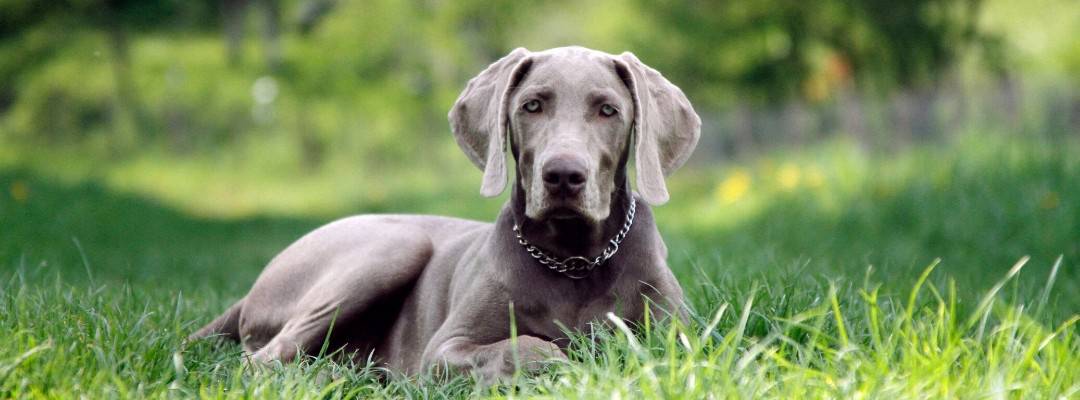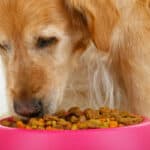As much as we all love our canine companions, there inevitably comes a point when we are forced to admit that they are not people.
Watching in horror as your dog calmly and deliberately eats poop is definitely one of those times. People, after all, do not consume feces, at least none that I know of.
After your nausea has settled down and you’ve come to terms that what you witnessed did indeed actually occur, you naturally want to understand how to stop them from eating poop, especially if your dog is fond of smothering your face with doggy kisses. (You’ll never quite treasure those as much again, will you?)
Of course, it would be nice if we knew exactly what dogs are thinking when they gaze at a fresh pile of you-know-what and then proceed to consume it with gusto.
Unfortunately, we don’t know what goes through their minds, but veterinarians suspect several culprits that trigger the urge for dogs to engage in coprophagia (the act of eating poop).
Read carefully through the following suspected causes (and their fixes) to determine which seems most probable in your dog’s case. In most dogs, the behavior can be changed but may require you to try several suggested solutions before you find what works for your individual dog.
Reasons Why Dogs Eat Poop
1. Lack of Nutrients
Dogs will instinctively try to fill nutritional deficits by foraging for plants or refuse, hunting, and yes, scouring the yard for poop which often contains undigested nutrients. You’re probably wondering how the dog whom you feed regularly could possibly be lacking vital nutrients.
Parasites
If your dog is plagued by internal parasites, his system is being constantly robbed of available nourishment. Parasitic infestations are a common cause of malnourishment which could lead your dog to be hungrier than normal and willing to ingest tidbits that he would not ordinarily consume.
Dog Food
Low-quality dog food can also lead to nutritional deficiencies. As is the case with many purchases, when it comes to dog food, you often get what you pay for.
Cheaper options often contain filler ingredients like corn and rice bran, soybean or corn hulls, and modified corn starch. While these additions may make your dog feel full, they contain very little nutritional benefits.
So What’s The Solution?
Bring your dog to the vet for a checkup. Your veterinarian can check for internal parasites that may be stealing nutrients and run blood tests to screen for any vitamin or mineral deficiencies.
Remember, a checkup should always be the first course of action whenever your dog exhibits any strange, new behavior.
Feeding your dog a high-quality dog food with real meat listed as the number one ingredient, or, better yet, organic dog food will help ensure that his daily nutritional requirements are being met. Over time, as the body restores proper levels of vital nutrients, the desire to meet his needs in other ways (eating poop) should go away completely.
Supplementing your dog’s regular meals with a multivitamin may help to put an end to coprophagia too. Look for vitamins that are preservative-free and contain probiotics to add beneficial enzymes to the digestive system.
The addition of enzyme supplements may put a stop to your dog’s nasty habit. Enzymes play a critical role in digestion as they help to break down carbohydrates, fats, and proteins into small molecules that can be utilized by the body.
Here are some simple ways to add more enzymes to your dog’s gut allowing him to absorb more nutrients and stop eating poop.
- Raw honey – just a teaspoon daily as it’s high in sugar.
- Green tripe – fresh, freeze-dried tidbits, or dehydrated chew sticks.
- Bromelain or papain supplements.
- Chewable probiotic supplements
2. They Like How Poop Tastes
I know that for people the mere thought is unfathomable, but for some dogs, poop seems to taste delicious. Why? Well, though no one really knows the answer, it is thought that dogs are able to smell any undigested nutrients remaining in poop.
Some animals, like cats, tend to eat a very high-protein diet, and dogs seem to find the “leftovers” from cats irresistible.
So What’s The Solution?
There are two separate approaches to making the poo taste less desirable. The first approach is only for dogs who are eating their own waste. The second approach can be used on any stool. Take a look at each of them before you decide which route you prefer.
Approach #1
Feeding certain foods such as pineapple, canned pumpkin, or raw zucchini apparently alters the taste of dog poop enough to make it unpalatable to most dogs. Try adding a tablespoon or so to your dog’s regular food to start with, and adjust the amount according to the results. Meat tenderizer is said to have the same effect as well.
Commercial products such as Cease Coprophagia or these chewable tablets also make the dog’s excrement taste bad. These chewable preventatives are easy to administer daily, and many dog owners have seen positive results.
Approach #2
The second approach involves offering your dog “condiments” along with his snack. Ignore the stares from your neighbors as you head outside armed with a jar of hot sauce, cayenne pepper, vinegar, or lemon juice and scan the yard for any fresh poop.
Liberally coat the pile with your secret weapon, and then sit back and wait for your dog to make his move. Odds are that he will quickly learn that poop is no longer as yummy tasting as it once was.
What about cat poop? If your dog’s preferred buffet table is the litter box, we have an excellent article filled with tips on stopping dogs from eating cat poop.
3. Instinct to Keep Their Surroundings Clean
In the wild, a dog would naturally leave his den to do his business elsewhere and keep his “home” clean. This is just a basic instinct common to many animals.
It might feel very unnatural to your dog to leave his droppings scattered across the yard which he considers part of his home. Some dogs have no problem with this, but other dogs are so driven by instinct that they may attempt to “clean up” the only way they can.
So What’s The Solution?
In this case, the best solution is to pick up and dispose of your dog’s waste immediately. Use either a pooper scooper or pet waste bags to avoid any direct contact.
Keep his surroundings clean for him, and the nasty habit should quickly become a thing of the past. In this article, we share the best ways to keep your yard clean and dispose of dog poop.
4. Desire To Avoid Punishment
A dog who has previously gotten into trouble for doing his business in the house, in his crate, or in a section of the yard that is off-limits may develop anxiety whenever he feels nature’s call.
Even if he has chosen an acceptable location, he may feel that he has done something wrong and will try to hide the evidence the only way that he knows how – by consuming it.
So What’s The Solution?
If this is the reason behind your dog’s coprophagia, time and patience will be crucial in correcting the behavior. You’ll want to use lots of positive reinforcement, not discipline, in situations like this to avoid causing your dog any additional anxiety about his bathroom habits.
Have some of his favorite treats on hand. Every time that he does his duty in an appropriate location and walks away without destroying the evidence, offer him a treat or two and lavish praise on him. Keep this up until he associates pooping in the correct spot (and leaving it there) with a positive experience.
5. Boredom, Stress, or Lack of Exercise and Mental Stimulation
Believe it or not, your dog may be eating stool because in his mind there’s nothing much else to do. As incredulous and disgusting as it might seem to us people, boredom is thought to be the underlying reason of coprophagia in some dogs.
Significant changes in their daily lives, like moving to a new house or losing a beloved family member, cause a dog to experience stress.
Like people, every dog handles stress differently. Some may become depressed or despondent, some may become aggressive or develop destructive behavior, some may refuse food, and some may eat everything in sight, including poop.
A dog who is not being regularly stimulated both physically and mentally will often come up with his own ways to burn off excess energy and entertain himself, frequently much to the owner’s dismay.
The dog is then oftentimes punished by either being ignored or locked up in his crate which leads to more boredom and additional stress. This can evolve into a vicious cycle.
So What’s The Solution?
Providing your dog with additional daily exercise and frequently challenging his cognitive abilities will not only help to relieve boredom and stress, but will also work to tire him out, both physically and mentally. A satisfied, tired dog is much less likely to participate in disgusting acts like poop eating.
You have many options when it comes to exercising and mentally stimulating your dog. Get creative to spice up your dog’s daily routine and bring some much-needed stimulation to his life.
Instead of the same old walk around the block, try driving to another part of town and walking around some “uncharted” territory. The new sights and smells of a different environment can be terrific mental stimulation for your dog as his brain works to process all of the information his senses are picking up.
Invest in a good variety of rope toys and sensory balls for your dog to play with. Simply dropping the new toys in front of him may not be enough though. Take the time to engage in a game of tug-of-war or fetch with him. Interacting with you will not only be more fun than playing by himself, but it will also strengthen the bond that you’ve already formed, leading to an even better relationship.
A Kong toy is a must-have for dogs who love to fetch. Instead of following a predictable, straight path as a tennis ball does, a Kong will often bounce off in a number of different directions after it hits the ground, much to the delight of dogs. As an added bonus, a Kong can be stuffed with peanut butter or small treats to keep your dog busy and engaged.
What about the days when the weather is too bad to get outside and play? That is the ideal time to introduce your dog to indoor puzzle toys. There are a lot of different styles to choose from, but they all focus on encouraging your dog to actively work towards a reward with no help from you.
For example, an interactive plush puzzle toy has squeaky toys hidden within a soft, plush base. The dog must figure out how to remove the small toys by either going in through the top or reaching them through the small access holes on the sides. The reward? Squeaky toys to play with and satisfaction that comes with a job well done.
Treat-dispensing puzzle games are another popular way to encourage dogs to use their noodle. The dog must learn to maneuver different components of the toy to uncover the hidden treats. These are great for dogs who are food motivated and need some mental enrichment.
If you have a large room or can scoot furniture around to make a play space, a flirt pole can be used indoors (or outside too, of course) to give your dog a complete workout with minimal effort on your part. You just stand in place, jiggle the lure at the end of the pole just out of your dog’s reach, and watch him exhaust himself.
Well, There You Have It!
To put an end to your dog’s coprophagia, visit your vet to rule out any health issues, diligently remove any poop from your property as soon as possible, increase physical and mental activity, and go out of your way to make the poop taste as bad as possible.



![[Help Guide] How to Stop Dogs from Eating Cat Poop Quickly! (2024) Cat leaving litter box after going poop.](https://www.trendingbreeds.com/wp-content/uploads/2019/10/How-to-Stop-Dogs-From-Eating-Cat-Poop-150x150.jpg)

